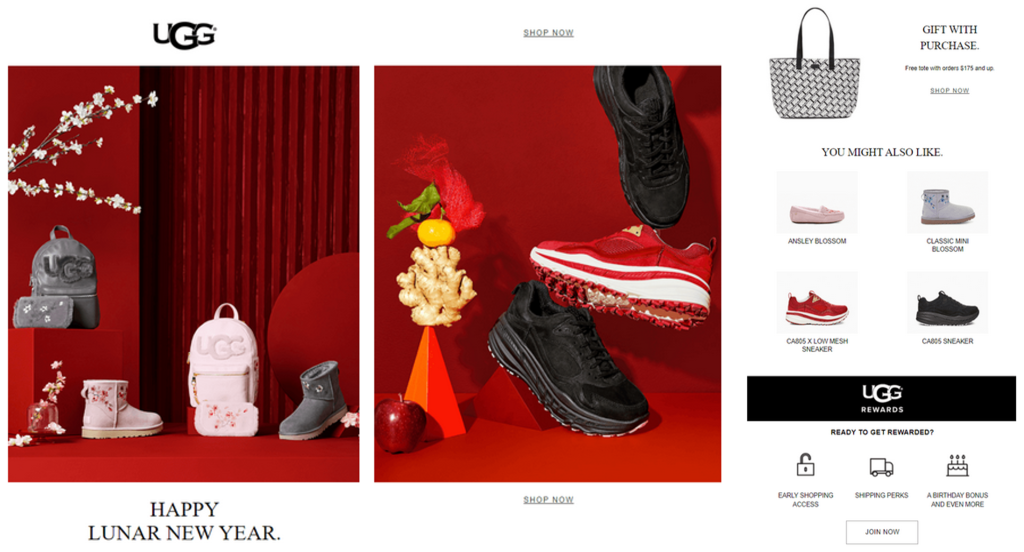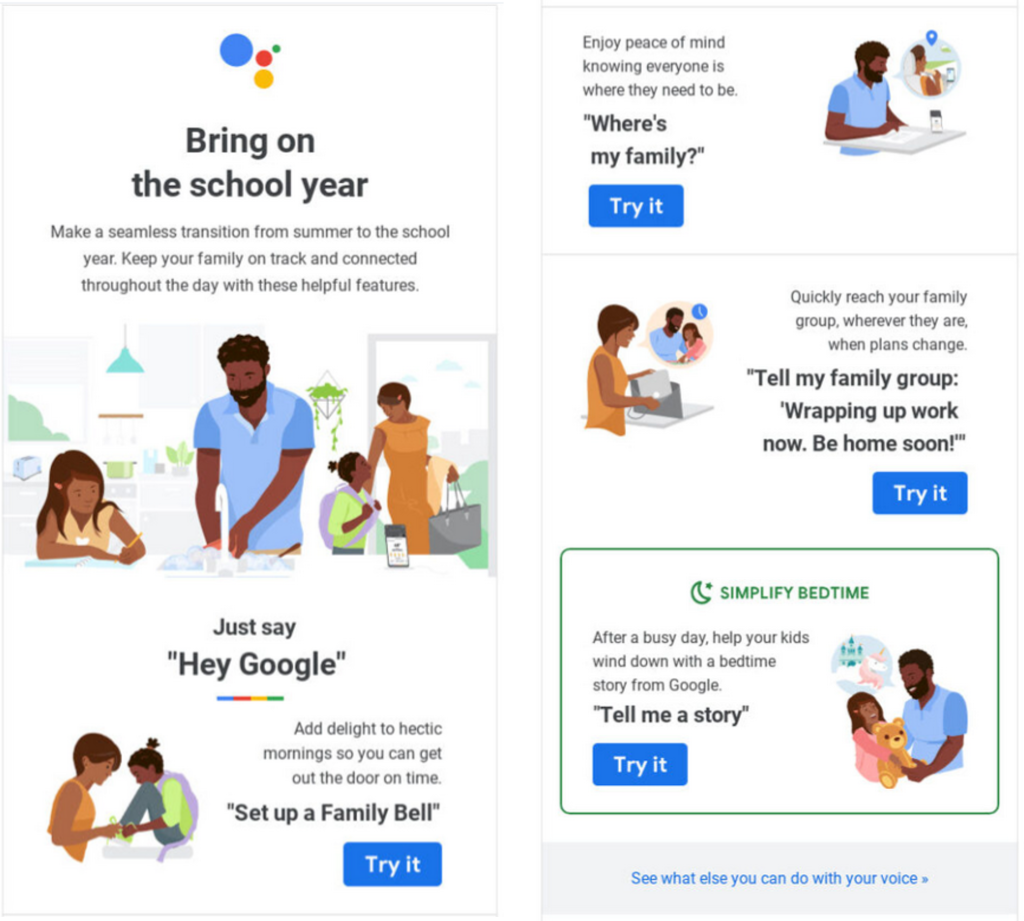- Home
- Friday Column
- Monthly Newsletter Ideas: From ...

Email newsletters account for 66% of all email marketing content, which only proves their significance for both customers and marketers. Why newsletter emails are so popular? They offer companies a unique opportunity to share information about new content or promotions, but also content that goes beyond that. Through newsletters, companies can inform their customers on various tips and share sustainability insights and best practices—everything that makes the connection between business and a client more solid and meaningful. And that is why monthly newsletters hold a special place here—they are ideal for delivering a well-rounded overview of what’s happening in your business or industry, providing value without demanding too much attention from subscribers. Sent once a month, they serve as a reliable touchpoint between your brand products and values and your subscribers.
Why people read newsletters
Monthly Newsletters vs. Weekly & Quarterly Newsletters
Weekly newsletters allow for more frequent communication and real-time updates. While focusing on continuous auditorium engagement, they can sometimes overwhelm subscribers or be too demanding on content creation for marketers.
Quarterly newsletters, on the other hand, provide more in-depth updates, like the company’s future plans or educational content. Their main drawback is the lack of consistency needed to maintain strong engagement.
Monthly newsletters provide a good balance by offering subscribers enough frequency to stay relevant without overwhelming them at the same time. They provide a steady rhythm of communication that keeps your brand present without becoming intrusive.
How to Make a Monthly Newsletter: Best Practices and Strategies
If you wonder what to include in a monthly newsletter to make your subscribers look forward to your email updates, it is important to keep a good balance between engaging content and regularity. Here are some important steps to follow:
- Define clear goals: It is important to decide what you want to achieve with your monthly newsletters: driving traffic, increasing sales, or building brand awareness. Either way, knowing your objective will make your monthly communication more efficient in comparison to a random email blast.
- Provide high-quality content: First, focus on providing content that aligns with your goals and resonates with your audience. Try to figure out what the questions and interests of your ideal clients are and address them in your newsletter. Finally, be concise but not boring: mix educational, entertaining, and promotional elements to keep your newsletter engaging.
- Maintain consistency: Send your newsletter at the same time each month to build anticipation and reliability among your subscribers.
- Don’t forget about the design: Create newsletters that are not only telling an engaging story but are also visually appealing and easy to navigate.
- Personalize the experience: Use data to your advantage and craft your content in alignment with the interests of your subscribers to achieve better connection and engagement.
- Include a strong call to action: Always conclude with a clear, compelling call to action that encourages readers to take the next step, whether it’s visiting your website, making a purchase, or engaging further with your brand.
Monthly Newsletter Calendar
January newsletter
January is a month that crowns the beginning of the New Year, which for many of us also means new beginnings, fresh resolutions, and renewed energy. During this time, people often reflect on the past year and set ambitious goals for the months ahead. It’s a time for dreaming big and planning for success. Companies can dive into this hopeful mindset by offering content that inspires and motivates their audience to embrace change, improve their lives, and achieve their goals.
Chinese Lunar New Year from UGG

Why is it good?
This January newsletter from UGG uses the dominant red color that symbolizes good fortune and joy and creates a festive atmosphere in a bold manner. Accents of blooming Sakura branches align with the Lunar New Year and infuse the design with a sense of renewal and fresh beginnings, which are key themes for January. The overall vibe in this newsletter is both elegant and eye-catching.
February newsletter
February is the month when many people around the world celebrate Valentine’s Day, so it is often associated with love and connection. Soon after Christmas and New Year celebrations, people are focused on relationships, both with others and with themselves. This is a great time for companies to focus on content that nurtures relationships. It can be provided in the form of advice, special deals for loved ones, or self-care tips.
Subject line examples from industries:
- Retail: “Celebrate Love: Unusual Valentine’s Day Ideas for You and Your Loved Ones.”
- Health & wellness: “Prioritize Your Well-Being with These Simple Habits.”
Design tip: Designs that utilize warm and inviting colors like reds, pinks, and soft purples will bring up feelings of love and comfort. Heart-shaped icons or soft, rounded elements can add a touch of romance to your February newsletter.
March newsletter
March marks the transition from winter to spring, which is often associated with a time of renewal. As nature begins to awaken, so do people’s desires to refresh their surroundings and routines. This is a month when we start filling our hearts with hope, so this month is ideal for companies to focus on themes of new beginnings, spring cleaning, and personal growth in their monthly newsletters.
The 8th of March newsletter from a real estate company

Why is it good?
This March newsletter celebrates International Women’s Day with soft and tender design. Soft beige and pastel tones and the flower theme highlight the gentle atmosphere, making it a classic. The design, minimalistic yet impactful, paired with the elegant typography, makes the newsletter look and feel warm, personal, and respectful at the same time.
April newsletter
In April we celebrate Easter. It is also the time when nature comes to full bloom and the days get longer and brighter. It’s a time of optimism and joy: the warmth is already there, and the whole summer is still ahead of us. Companies can capitalize on this positive energy and vibe by creating content that encourages celebration, outdoor activities, and eco-friendly practices.
Subject line examples from industries:
- Outdoor retail: “Get Outside: Elegant Gear for Your Spring Adventures.”
- Sustainable living: “Simple Steps to Make Your Home More Eco-Friendly.”
Design tip: Incorporate light, airy designs with pastel colors that reflect the gentle beauty of spring. You can use imagery of flowers, bunnies, or eggs to add a playful, celebratory feel to your April newsletter.
May newsletter
There’s only one month left until summer and no heat yet! This is May, a month when people increasingly focus on outdoor activities and enjoy nature to the fullest. Many take vacations before crowded summer breaks begin. So, if you wonder how to make a great monthly newsletter, May is a great time to remind your customers about going out, traveling, and using your products along the way.
The tasty spring newsletter from Plated

Why is it good?
This May newsletter is a perfect example of how minimalistic design can be bold and efficient at the same time. Bright greens, crisp whites, and rich pinks and oranges get accentuated by a neutral background and immediately draw attention to the natural spring ingredients. The color palette and imagery of fresh vegetables perfectly capture the essence of May and invite readers to embrace the fresh flavors that come with the season.
June newsletter
June brings the start of summer, and with it, a sense of freedom, adventure, and relaxation. People are looking to enjoy the sunshine, take vacations, and make the most of the long days. Companies can tap into this mood by offering content related to travel, summer activities, or simply enjoying life.
Subject line examples from industries:
- Fashion: “Stay Cool and Chic This Summer with Our New Linen Collection.”
- Tech: “Upgrade Your Summer: Must-Have Gadgets for Your Next Adventure.”
Design tip: Infuse your design with bold, sun-soaked colors like yellows, oranges, and blues to capture the essence of summer’s vibrancy. Highlight the carefree spirit of June by incorporating images of sandy beaches, sun-drenched sunglasses, or lively outdoor scenes, making your June newsletter a refreshing burst of seasonal energy.
July newsletter
July, the midsummer month that is full of summer swing, with people fully engaged in outdoor activities and celebrations like the 4th of July. It’s a time of patriotism, fun, and family gatherings. But also of heat waves and a need to cool down. Companies can leverage these themes by creating newsletters that suggest ways to make the most of summer without exposing yourself to heat too much.
The classic midsummer newsletter from Bubble

Why is it good?
Summer. BBQ. Heat. This July newsletter managed to capture the spirit of the month in its most traditional way. Family gatherings and celebrations are showcased here through the warm, inviting design and color scheme. The central image of a barbecue spread, complete with sauces, grilled meats, and classic sides, immediately evokes the communal spirit of summer get-togethers. With events like Independence Day and summer weekends, this theme is central to July, which is skillfully highlighted by the BBQ essentials from Bubble.
August newsletter
August is often seen as the last hurrah of summer, a time to enjoy the final days of warmth before the routine of fall begins. It is time when nostalgia about the summer sets in as we see the first falling leaves. People are looking to squeeze in as much fun and relaxation as possible. This time can be used for offering end-of-summer sales, back-to-school tips, or content that helps people transition from summer to fall.
Subject line examples from industries:
- Retail: “Catch the Last Sunrays with Us: 25% Discount on All Summer Collection.”
- Education: “Back-to-School Checklist: 5 Things for a Successful and Fun Year Ahead.”
Design tip: Use a blend of summer brights with early autumn tones like deep oranges and golds to create a smooth transition. Incorporate visuals of sunsets, autumn leaves, or school supplies to reflect the themes of August in your monthly newsletter email.
September newsletter
September marks the beginning of fall and the return to routine, whether that’s school, work, or simply preparing for the cooler months ahead. In a way, it is a time of change and transitioning from a more relaxed summertime to a time for new beginnings, learning, and planning. September is the time when newsletters that focus on productivity and learning opportunities can fit just right in your customers’ mailboxes.
Returning to cozy routines with the Google newsletter

Why is it good?
This September newsletter from Google effectively captures the back-to-school and work time with its use of traditional Google colors and warm, cartoony illustrations. The family-focused theme, featuring relatable daily activities, highlights Google’s tools as helpful solutions for managing the busy season. The clean design and relatable visuals make the content easy to engage with and position Google as a supportive companion during this time.
October newsletter
October is all about fully embracing the fall season, with its cooler weather, Halloween, and a sense of preparation for the winter months. It’s a time of beautiful autumn colors, spooky fun, and catching the sunrays during shortening days. October is the month full of Halloween spirit but also of the love for cozy, seasonal activities—use both to communicate to your customers in autumn newsletters.
Subject line examples from industries:
- Retail: “Spooky Halloween Decor and Costume Ideas for a Frightful Night.”
- Beauty: “Make Your Skin Glow This Fall with Our October Skincare Tips.”
Design tip: Utilize dark, rich colors like deep purples, blacks, and oranges to evoke the mystery and fun of Halloween and the fall season. Incorporate spooky or autumn elements like classic pumpkins, bats, or falling leaves in your October newsletter design.
November newsletter
November is a month of gratitude and preparation for the upcoming holiday season. With Thanksgiving at its heart, it’s a time to reflect on what we’re thankful for and to prepare for the holidays ahead. This is the perfect time for companies to focus on themes of gratitude, family, and holiday preparations in their monthly newsletter emails.
Along the memory line with the Turtletalk newsletter

Why is it good? What sets this November monthly newsletter apart is that it draws its subscribers’ attention to the heritage of Native American people—unlike many other newsletters focusing mainly on Thanksgiving day during this time of the year. Its simple design with traditional fall colors and elements evokes nostalgic and warm feelings—similar to the feelings we have thinking of the people and cultures long gone.
Also check the Black Friday marketing ideas: Black Friday Email Marketing in 2024: Fresh Takes
December newsletter
December crowns the end of the year—the time when we reflect upon the 12 months we went through. With holidays like Christmas, Hanukkah, and New Year’s Eve, it’s a time for joy, giving, and looking back on the year. During this time of the year, newsletters that reflect with us or provide tips for ending the year on a high note will go well along with your customers’ mood. Tips on winter shopping are always welcome too!
Subject line examples from industries:
- Retail: “Holiday Cheer: Last-Minute Gift Ideas to Spread Joy This Season.”
- Finance: “Year-End Financial Checklist: Prepare for a Prosperous 2025.”
Design tip: Use festive, cheerful colors like red, green, and gold to evoke the holiday spirit. Incorporate holiday-themed elements like snowflakes, ornaments, or twinkling lights to create a joyful and celebratory December newsletter design.
To Sum Up
Monthly newsletters play an important role in fostering ongoing relationships between businesses and their customers. In this article, we discussed the importance of these newsletters, how they are different from weekly and quarterly ones, as well as emphasized how they serve as a consistent touchpoint that adds value to companies and subscribers alike.
Additionally, we provided valuable tips on how to create a monthly newsletter that is both engaging and distinctive in terms of design and content. By applying these strategies, you can ensure your newsletters not only capture attention but also effectively communicate your brand’s message and make each edition something your audience looks forward to.

